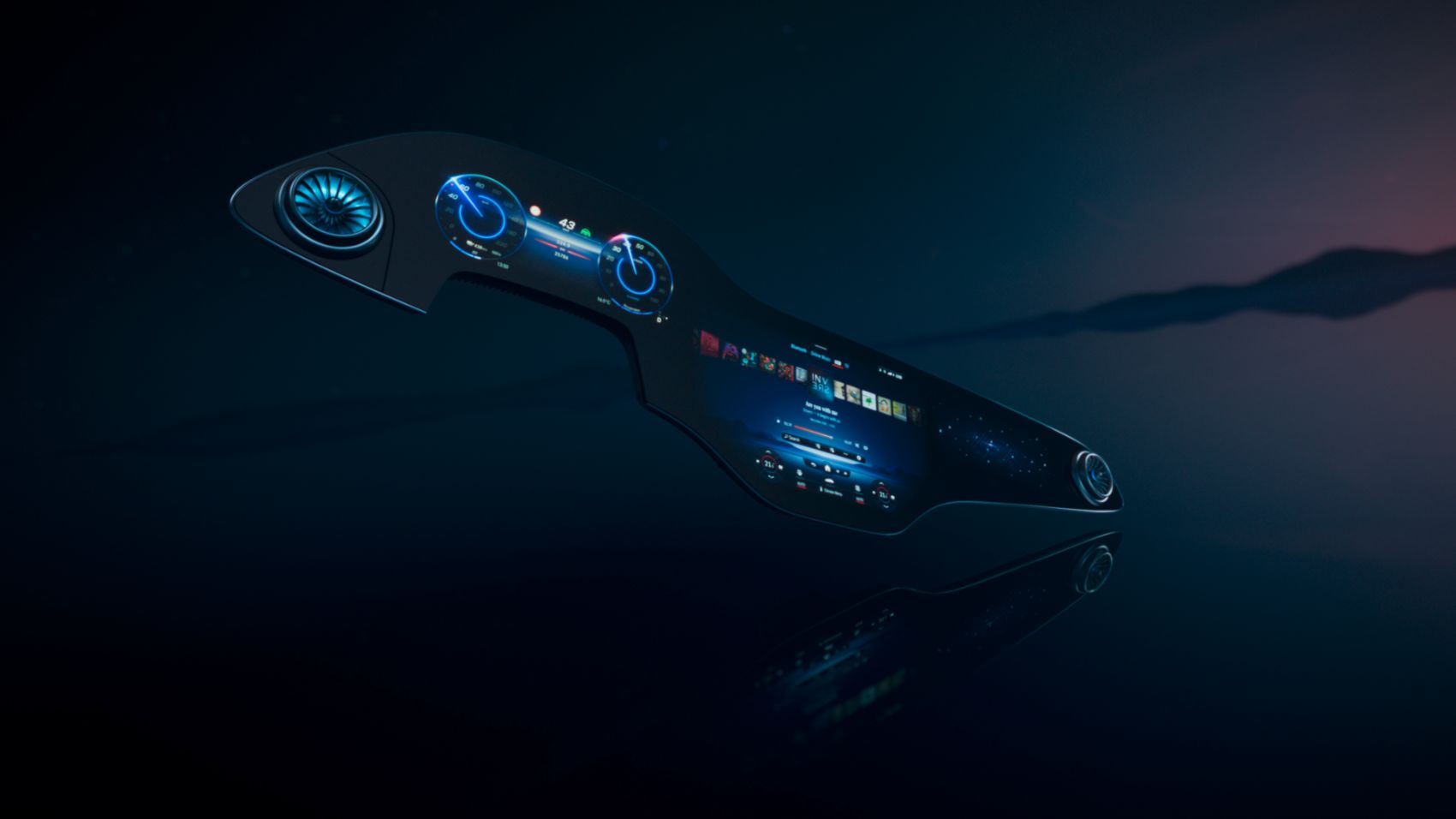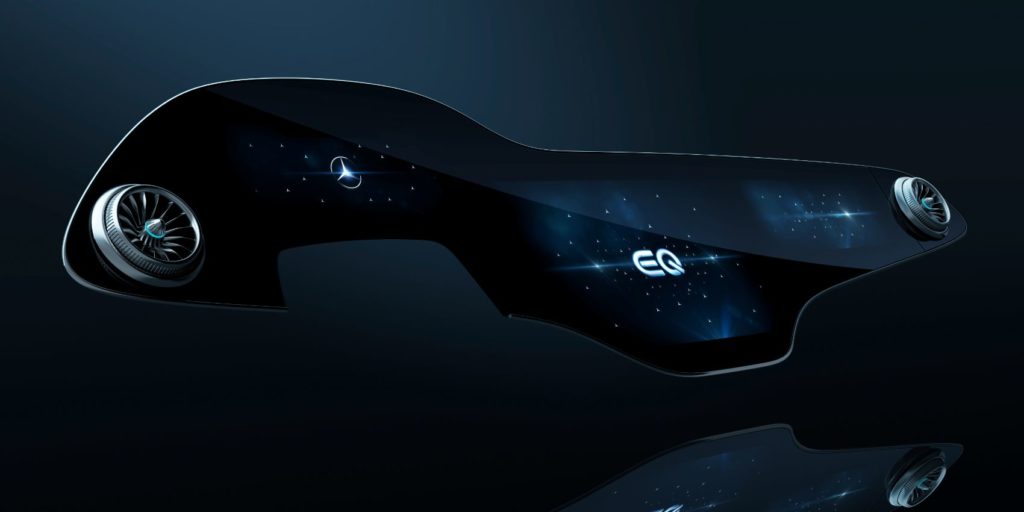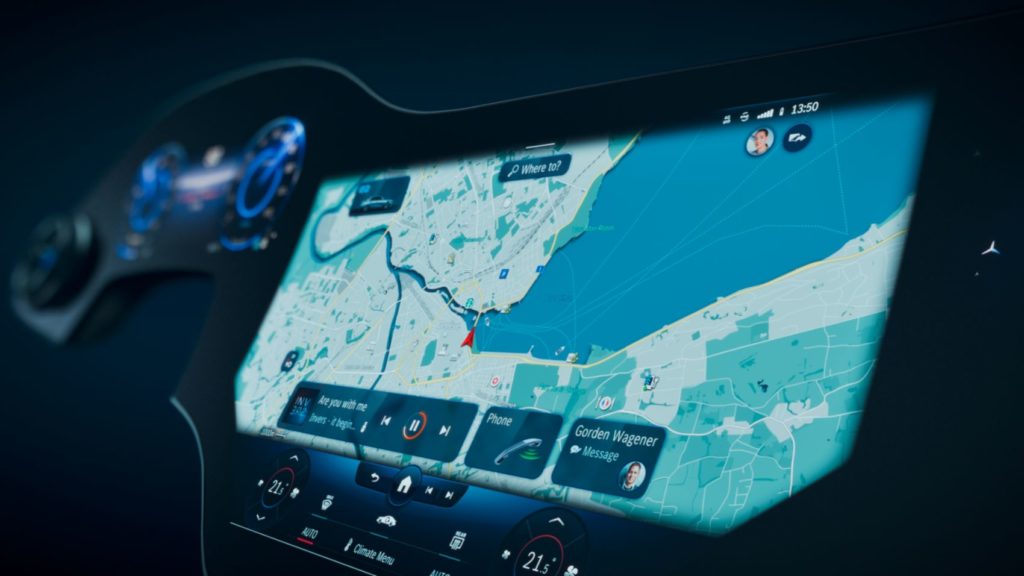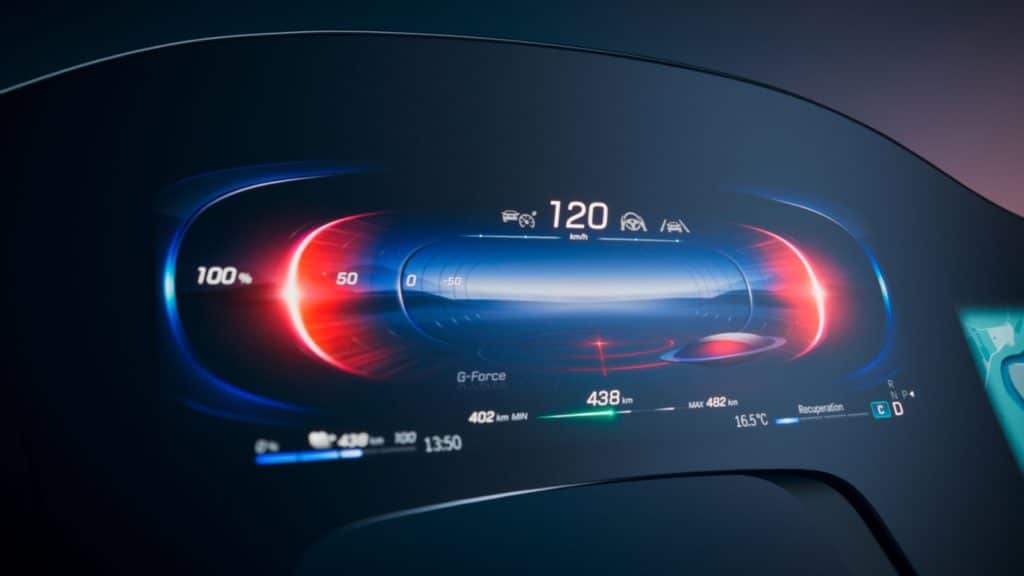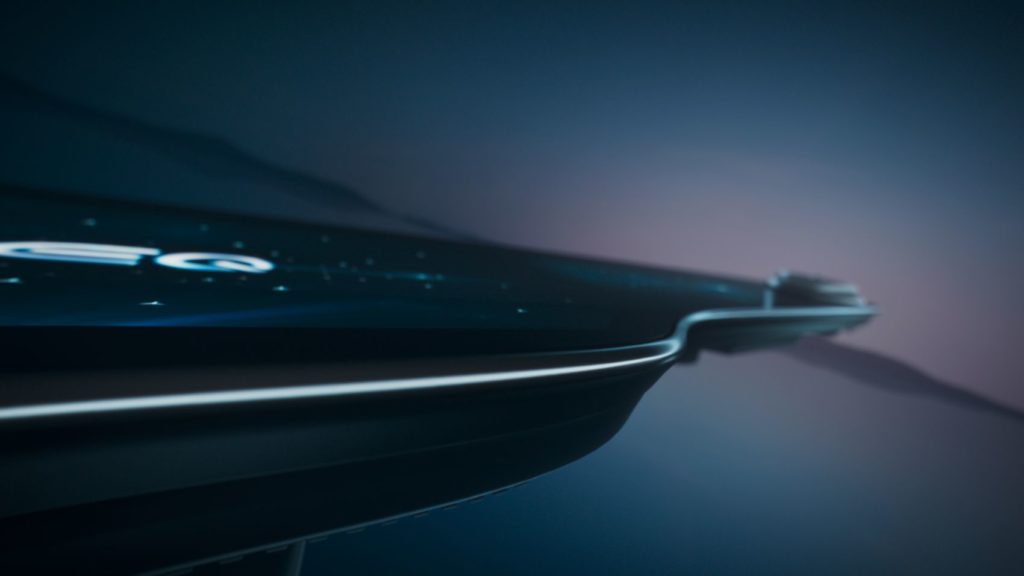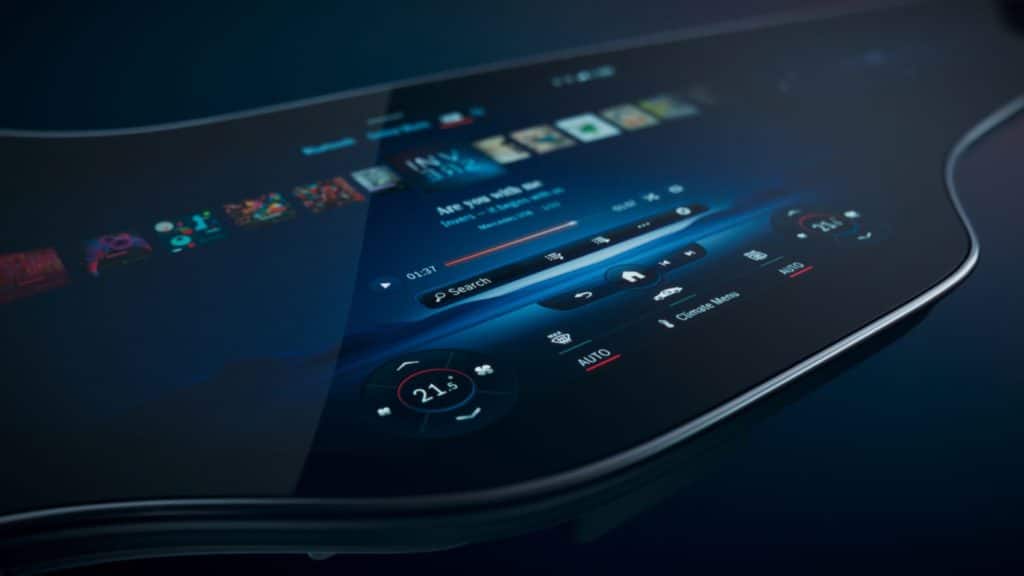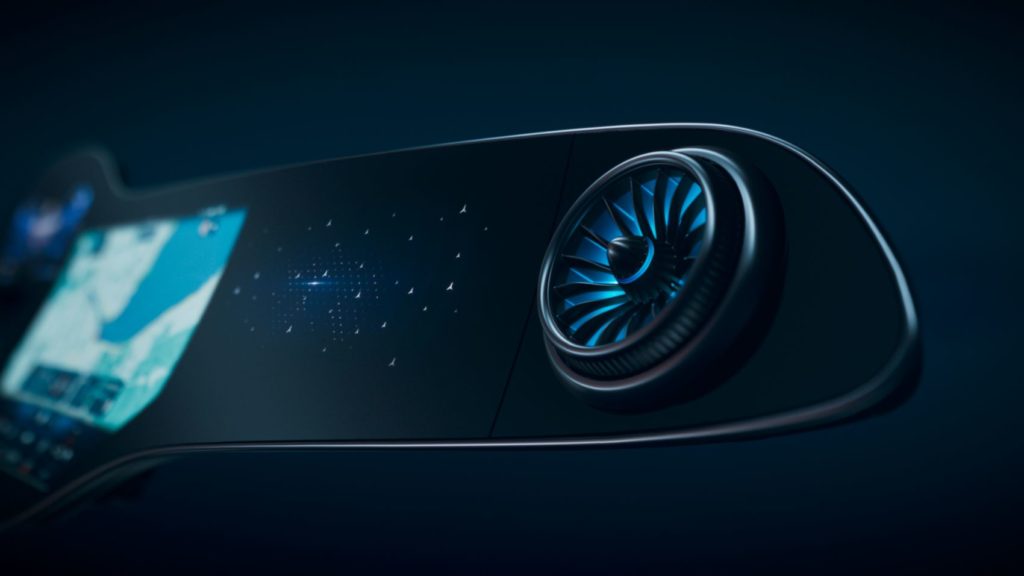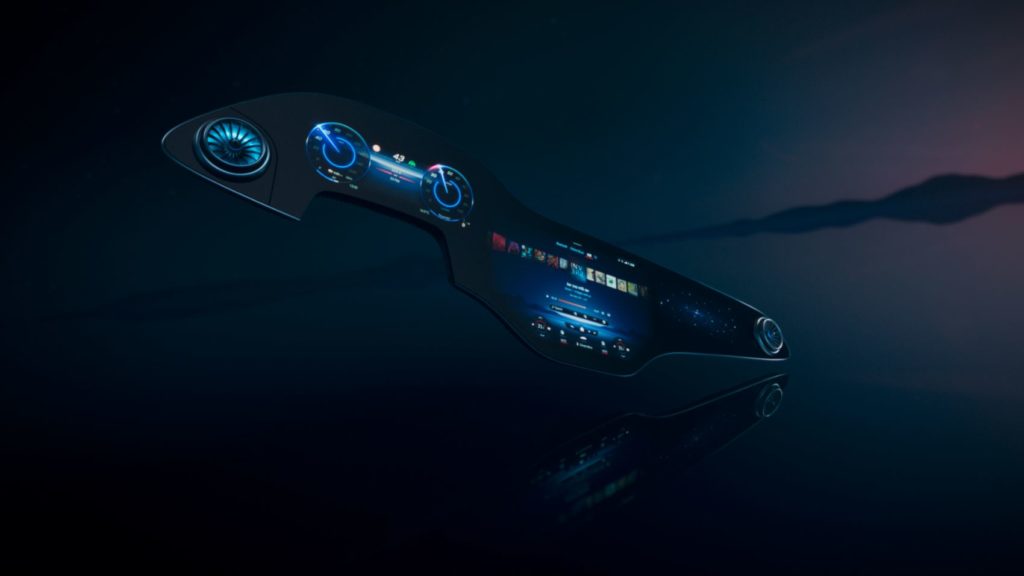This article originally appeared on AutoVision News. It has been republished with permission.
The recently announced multi-display screen for the Mercedes-Benz EQS luxury EV leaves Tesla’s 17-inch display and Porsche Taycan’s 16.8-inch screen in the dust. Buyers of the all-electric Mercedes EQS will have the option for a large, curved panel that is 56 inches wide (almost the width of the vehicle) with a total surface area of 377 square inches for the passengers. The new interface is officially called the MBUX Hyperscreen and is the next iteration of the MBUX (Mercedes-Benz User Experience) that first debuted in 2018.
Personalized Functionality
Gone is scrolling through a menu to find an entertainment option or add a destination to the navigation. This new system uses highly sophisticated cameras to read and remember both the driver and front-seat passenger’s body language. And it allows the driver to turn off unwanted functions.
Perhaps best of all, the system learns the front occupants’ behaviors based on their movements. That allows it to display and operate specifically for each user. Mercedes-Benz noted the most vital applications are always offered in a situational and contextual way.
“The goal was a concept without distraction of the driver or creating complicated operation,” Gorden Wagener, Chief Design Officer Daimler Group, and Sajjad Khan, Member of the Board of Management, Mercedes-Benz AG and CTO, in a written statement. “The MBUX Hyperscreen gets to know the customer better and better, providing customized, personalized infotainment and operating offers before the passenger has to click anything.”
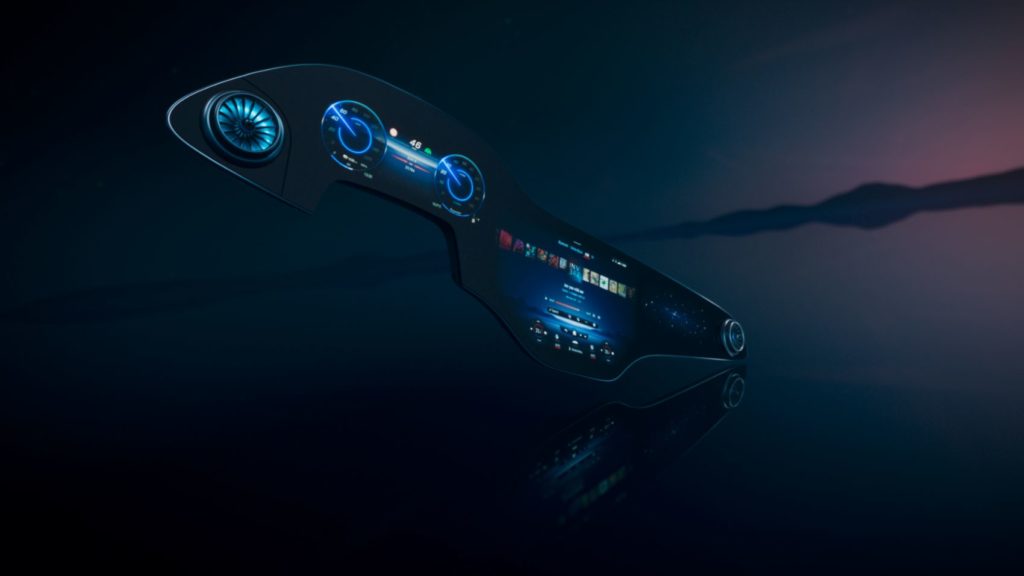
Intuitive Assistant
Mercedes-Benz boosted its already stellar artificial intelligence (AI) system to develop this more intuitive camera-based system to read both driver and passenger body language. It’s also quick to serve as an assistant that needn’t be told an occupant’s routine driving style. One example if is a driver always likes to turn on the massaging seat after an hour on the road, the system can automatically activate it in each instance.
The same learning and adaptation are available for the front passenger. Mercedes-Benz allows storage of up to seven customized profiles. When a driver has no front seat passenger, the screen is decorative. For example, it may display the animated stars, part of the Mercedes-Benz pattern. The driver and passenger can also suspend unused functions.
MBUX Hyperscreen Specifications
- The glass cover display is curved three-dimensionally in the molding process at temperatures around 1,202°F. This process allows a distortion-free view of the display unit across the entire width of the vehicle, irrespective of the display cover radius.
- There are 12 actuators beneath the touchscreen for haptic feedback during operation. If the finger touches certain points there, they trigger a tangible vibration in the cover plate.
- Two coatings of the cover plate reduce reflections and make cleaning easier. The curved glass itself consists of scratch-resistant aluminum silicate.
- The safety measures include predetermined breaking points alongside the side outlet openings as well as five holders which can yield in a targeted manner in a crash thanks to their honeycomb structure.
- Eight CPU cores, 24-gigabyte RAM, and 46.4 GB per second RAM memory bandwidth are some of the MBUX technical specifications.
Mercedes-Benz crafted the MBUX Hyperscreen so it appears to float on the instrument panel. That’s done through a design that involves thin layers, integrated ambient lighting, and the use of a continuous plastic front frame. A three-layer “Silver Shadow” process gives it a high-quality surface impression.
The automaker made sure this “wow” factor option is safe. Thin, light, damage-free Gorilla Glass covers the Organic Light Emitting Diode (OLED) light-emitting technology. Plus, the light from the display adjusts so as not to distract the driver.
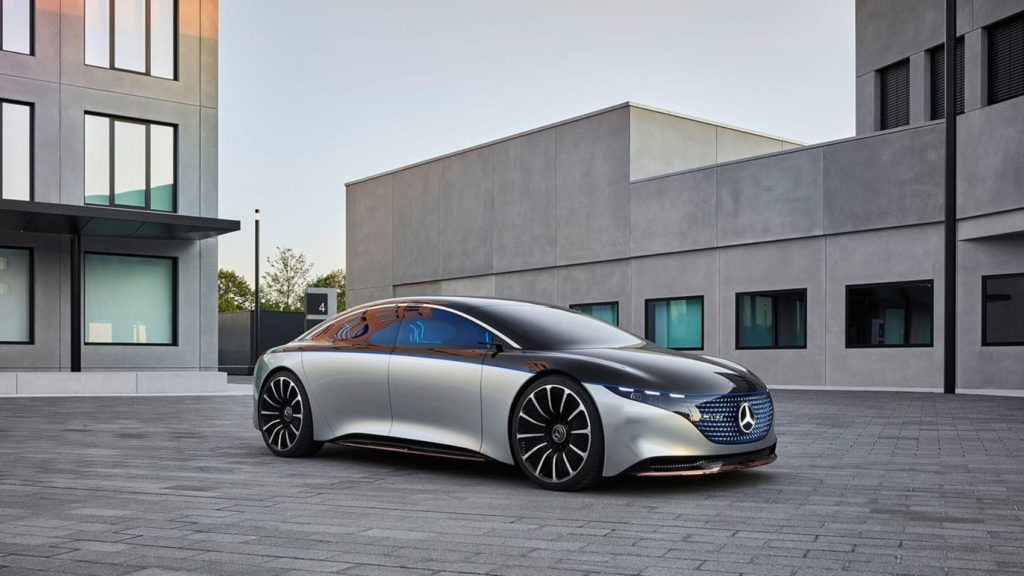
MBUX Hyperscreen Use Cases
Mercedes-Benz offers the following four use cases to illustrate functions the driver and passenger can accept or reject:
Contacting Family, Friends & Associates
If you always call one particular person on the way home on Tuesday evenings, you will be asked to make a corresponding call on that day of the week and that specific time of day. A business card appears with their contact information, and – if it’s stored – their photo will appear. All MBUX suggestions are linked to the user’s profile. If someone else drives the EQS on a Tuesday evening, this recommendation would not be made – or another one is made, depending on the preferences of the other user.
Enhanced Luxury Features
If the EQS owner regularly uses the hot-stone massage function featured in the optionally available Active Multicountour Seats, the system learns and automatically suggests the hot-stone massage function for the driver in colder temperatures.
Intuitive Comfort Settings
If the driver regularly uses both the heated steering wheel and heated seat functions together, MBUX suggests enabling the heated steering wheel as soon as the user turns on the heated seat.
Ride Comfort
The suspension of the EQS can be raised in order to offer more ground clearance. A useful function for steep driveways or speedbumps to create a smoother ride. MBUX remembers the GPS position where the user utilized the Raise Vehicle function. If the vehicle approaches this GPS position again, MBUX automatically suggests raising the EQS.
Nancy Dunham is a life-long journalist whose work appears in many national automotive and general interest magazines and accompanying websites. Her dad was an executive with Western Auto Supply Co. (sold to Sears), so the smell of tires still brings back a flood of childhood memories. She lives in Austin, Texas with her cat Prudence.
MBUX Hyperscreen Gallery
Photos & Source: MBUSA.

